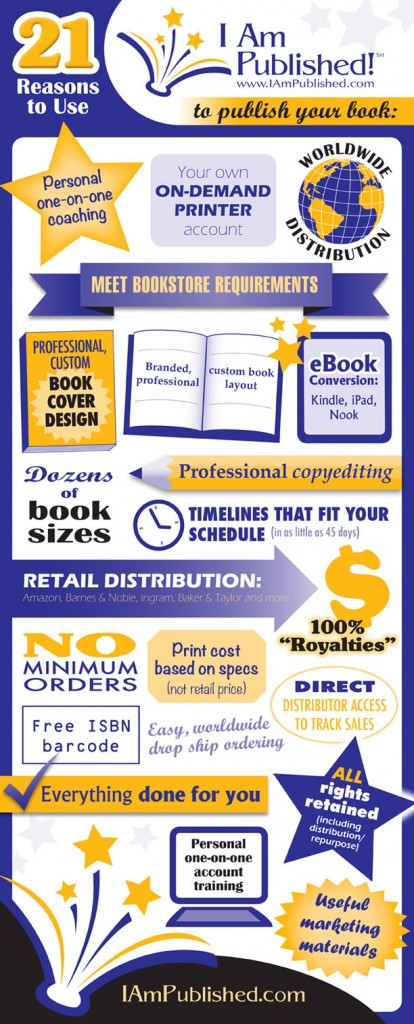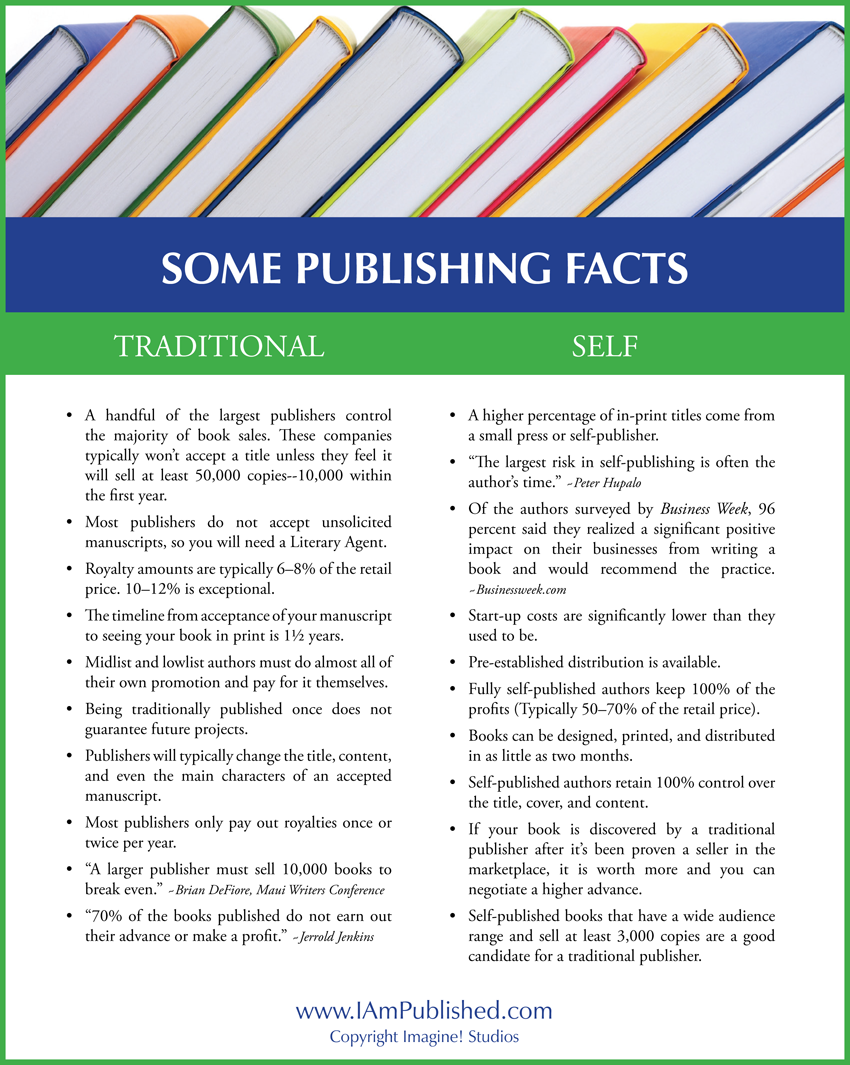lowlist
21 Reasons to Use I Am Published to Publish Your Book
Published March 23, 2016 | By I Am Published!
Assisted self publishing is a happy medium between DIY and traditional publishing. It might be the right fit for you!
Every registration is done in your name as the publisher of record. There’s no middle man, no vanity “publishing” company slapping its name on your book and stealing profits from your hard-earned book sales.
- Personal one-on-one coaching
- Your own on-demand printer account
- Worldwide distribution
- Meet bookstore requirements
- Professional, custom book cover design
- Branded, professional custom book layout
- eBook conversion: Kindle, iPad, Nook
- Dozens of book sizes
- Professional copyediting
- Timelines that fit your schedule (in as little as 45 days)
- Retail Distribution:
Amazon, Barnes & Noble, Ingram, Baker & Taylor and more - 100% Royalties
- No minimum orders
- Print cost based on specs (not retail price)
- Direct distributor access to track sales
- Free ISBN barcode
- Easy, worldwide drop ship ordering
- Everything done for you
- All rights retained (including distribution repurpose)
- Personal one-on-one account training
- Useful marketing materials
Posted in Uncategorized | Tagged advance, Amazon, artwork, author, Baker & Taylor, Barnes & Noble, book, Book cover design, Book Design, book designer, book publishing, bookstore requirements, branded, coaching, comparison, conversion, copyediting, cost, costs, cover, cover design, custom, custom book cover, custom graphics, decision, direct distributor, distribution, drop ship, e-book, ebook, facts, first time author, free ISBN barcode, graphic designer, hardcover book, illustrator, Ingram, ipad, Joe Eckstein, kindle, layout, lilterary agent, lowlist, manuscript, marketing, marketing materials, midlist, minimum, no minimum, nook, on-demand, ordering, paperback book, promoting your book, publish, publishing, rights, royalties, royalty, schedule, self-publishing, sized, some publishing facts, specifications, timeline, traditional, training, unsolicited
Some Publishing Facts
Published March 16, 2016 | By I Am Published!
As you’re contemplating how to publish your manuscript, you will find several schools of thought on the topic. If you are a first time author, it can be especially confusing to know the difference between traditional and self-publishing.
The information in this post will give you a concise comparison of these two methods and some of the facts you should know before you make your decision.
Posted in Uncategorized | Tagged advance, artwork, author, Book cover design, Book Design, book designer, book publishing, comparison, costs, cover design, custom, custom book cover, custom graphics, decision, e-book, facts, first time author, graphic designer, hardcover book, illustrator, Joe Eckstein, lilterary agent, lowlist, manuscript, midlist, paperback book, promoting your book, publish, publishing, royalty, self-publishing, some publishing facts, specifications, traditional, unsolicited

